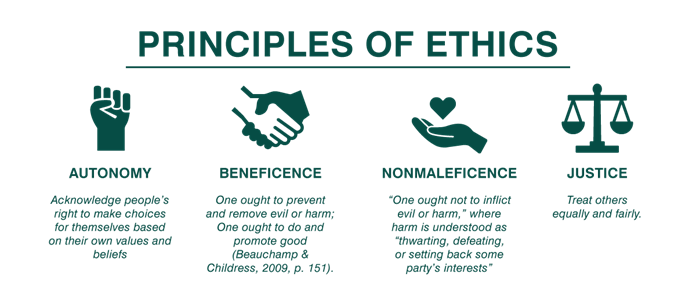Doing no harm is?
Justice
Nonmaleficence
Beneficence
Veracity
The Correct Answer is B
Nonmaleficence is the ethical principle of doing no harm. It requires healthcare providers to avoid causing harm to their patients and to take steps to prevent harm from occurring.
The other options are also important ethical principles in healthcare, but they do not specifically refer to doing no harm. Justice [a] refers to the fair distribution of benefits and burdens in society. Beneficence [c] refers to the obligation to do good and promote the well-being of others. Veracity [d] refers to the obligation, to tell the truth and not deceive others.

Nursing Test Bank
Naxlex Comprehensive Predictor Exams
Related Questions
Correct Answer is A
Explanation
If an assistive personnel (AP) refuses to take a specimen to the laboratory, the nurse should first discuss the incident with the AP. This allows the nurse to understand the reasons for the refusal and to address any concerns or issues that may have led to the refusal.
Option B may be necessary at some point, but it should not be the first response.
Option C may also be necessary to ensure that the specimen is delivered to the laboratory in a timely manner, but it does not address the underlying issue.
Option D may also be necessary at some point, but it should not be the first response.
Correct Answer is B
Explanation
The charge nurse should include the statement "The final step in delegation is evaluation of the outcomes" in the teaching. This is because it is important for the nurse to evaluate the outcomes of delegated tasks to ensure that they have been completed correctly and that the client's needs have been met.
Option A is incorrect because it is not the AP's responsibility to document the client's outcome for a delegated task.
Option C is incorrect because a delegated task should have predictable outcomes.
Option D is incorrect because the nurse does not give up accountability for client outcomes when care is delegated. The nurse remains accountable for ensuring that the delegated task is completed correctly and that the client's needs are met.
Whether you are a student looking to ace your exams or a practicing nurse seeking to enhance your expertise , our nursing education contents will empower you with the confidence and competence to make a difference in the lives of patients and become a respected leader in the healthcare field.
Visit Naxlex, invest in your future and unlock endless possibilities with our unparalleled nursing education contents today
Report Wrong Answer on the Current Question
Do you disagree with the answer? If yes, what is your expected answer? Explain.
Kindly be descriptive with the issue you are facing.
